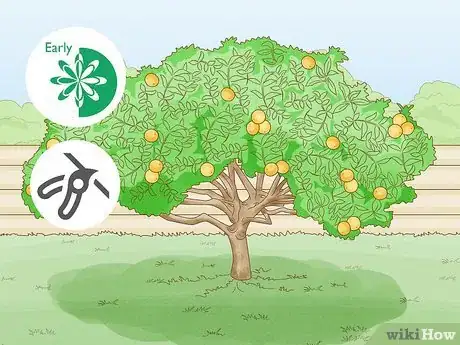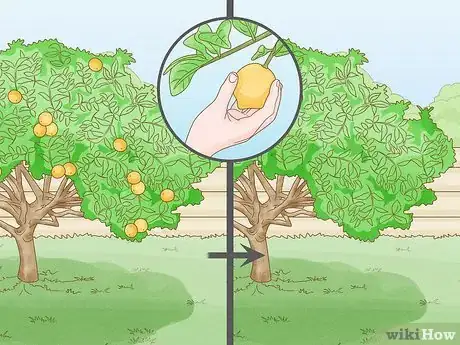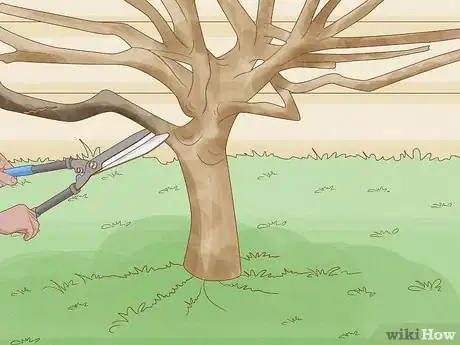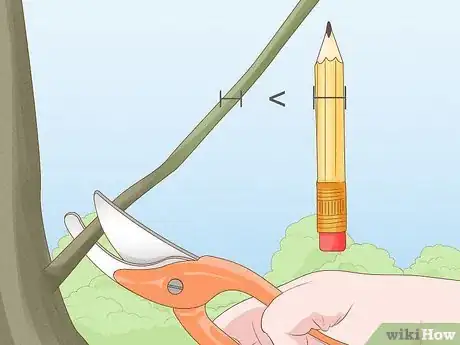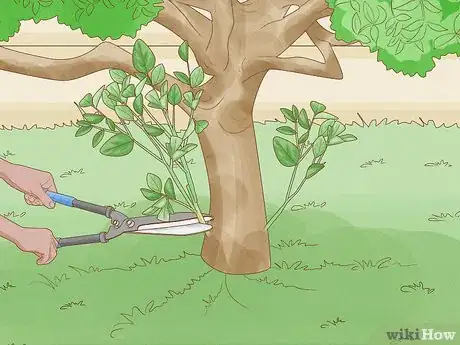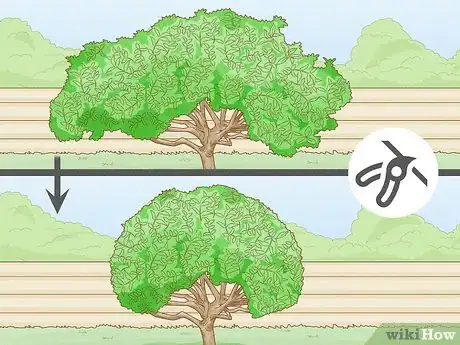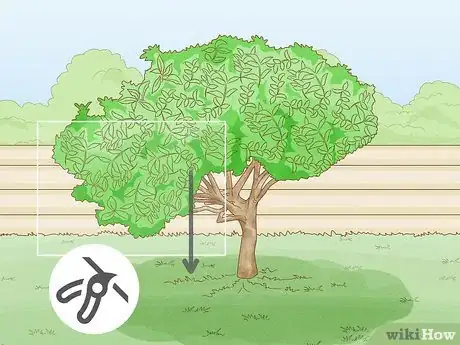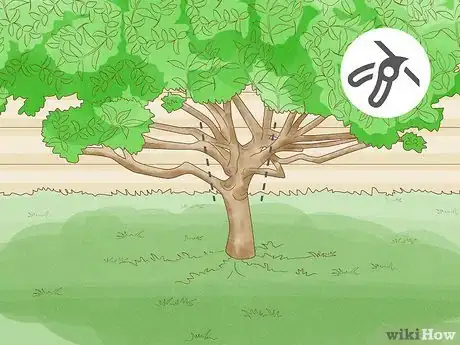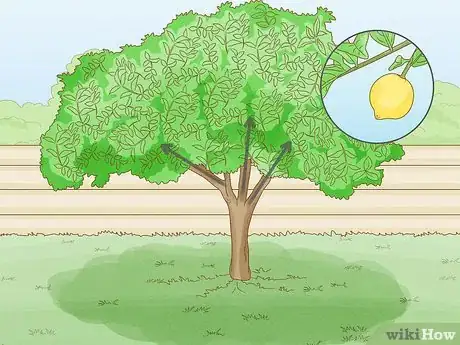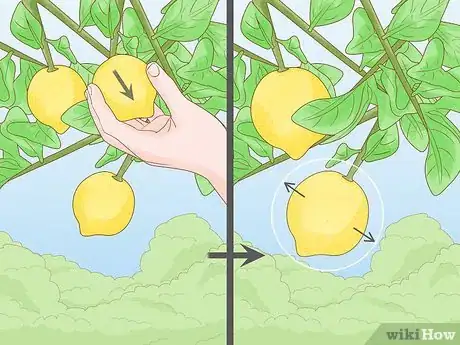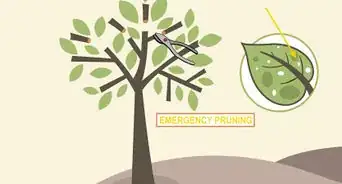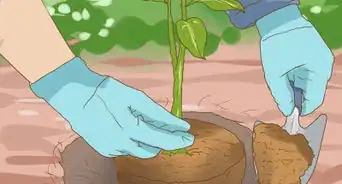This article was co-authored by Steve Masley. Steve Masley has been designing and maintaining organic vegetable gardens in the San Francisco Bay Area for over 30 years. He is an Organic Gardening Consultant and Founder of Grow-It-Organically, a website that teaches clients and students the ins and outs of organic vegetable gardening. In 2007 and 2008, Steve taught the Local Sustainable Agriculture Field Practicum at Stanford University.
wikiHow marks an article as reader-approved once it receives enough positive feedback. This article received 30 testimonials and 96% of readers who voted found it helpful, earning it our reader-approved status.
This article has been viewed 623,831 times.
Lemon trees come in all sizes. They range from the dwarf lemon tree, which can grow 2 to 8 feet (.61 to 2.44 m), to standard trees that can reach 15 feet (4.6 m) or higher. The Meyer lemon can be grown in a pot and still produce regular-sized lemons for its owner. Regardless of the size of your tree, you should learn how to prune a lemon tree to a suitable shape. Pruning lemon trees opens up the center of the tree, allowing easy access when spraying, and creates a large fruit-bearing surface area than can be reached by the sun and the harvester. Pruning also creates sturdy branches that are strong enough to support the fruit they produce.
Steps
-
1Choose the proper time to prune lemon trees. Lemon trees are evergreen trees that do not demonstrate a true dormancy, such as the loss of leaves. However, the growth and metabolism of the trees slow down after the fruit harvest. Lemon trees in cooler climates show slower activity just before the rapid spring growth. Pruning should occur during this period of dormancy or right when the new spring growth appears.[1]EXPERT TIPSteve Masley has been designing and maintaining organic vegetable gardens in the San Francisco Bay Area for over 30 years. He is an Organic Gardening Consultant and Founder of Grow-It-Organically, a website that teaches clients and students the ins and outs of organic vegetable gardening. In 2007 and 2008, Steve taught the Local Sustainable Agriculture Field Practicum at Stanford University.Home & Garden Specialist

 Steve Masley
Steve Masley
Home & Garden SpecialistOur Expert Agrees: It's best to prune lemon trees in the early spring before new growth has started. That way, as the growing season starts, the tree will redirect growth into the branches you've kept. If you prune in other times of year, the plant has already committed resources to the branches you're cutting, so it's more stressful. Also, pruning can often stimulate new growth, so if you prune going into the winter, that new growth is likely to be damaged by a hard frost.
-
2Remove all fruit from the tree.Advertisement
-
3Prune any branches that are damaged or diseased all the way back to the base.[2]
-
4Cut any branches that are smaller than the diameter of a pencil.
-
5Prune suckers as they appear at any time. Lemon trees are made by grafting normal-sized fruit-bearing branches on smaller tree stock (for dwarf trees) or more hardy stock. Suckers are shoots from the rootstock that will reduce fruit yield and adversely affect the health of the lemon tree. They often surpass the height of the main plant in a couple of months if left unchecked, "sucking" the nutrients from the bearing part of the tree.[3]
- Suckers that are green and newly formed can be gently broken off at the base.
- Suckers with woody stems should be cut with pruning shears flush with the trunk of the lemon tree.
-
6Decide if you want an open, compact, or hedge type tree look. This will also depend on the type of lemon tree that you have. A small potted lemon tree may produce better with and open look, whereas some people may want a bushier plant.
- Traditional lemon pruning results in a tree that is bigger at the bottom than the top. This allows for equal sunlight to all parts of the tree.[4]
-
7Look at the overall shape and balance of the tree. If the tree has more branches on one side, remove some on the heavier side until the tree balances out.
-
8Remove the lower branches to give the tree a single, sturdy trunk.
-
9Choose 2 or 3 branches to be the main scaffold branches that you will train to bear the fruit.
-
10Cut the center stem off, which will open up the center of the tree.[5]
-
11Cut off the tips of the main branches. This will force the branches to grow thicker and sturdier. Over the next several growing seasons, concentrate on the main branches that you have chosen, cut them back as needed, and allow secondary branches to grow out from them. Cut back anything that is not strong or that blocks the light from entering the tree.
-
12Thin fruit by plucking it off to produce larger fruit and to allow the canopy to grow in young trees. Trees should not be allowed to bear fruit until they are mature, which is between 3 and 4 years old.
Community Q&A
-
QuestionCan I grow a new Meyer lemon tree from the cutting of a current tree?
 Community AnswerYes, you definitely can. Just make sure to take clones off of softwood branches (the new green ones that haven't developed bark yet). Clones usually take 3-4 weeks to develop roots. Once established, they should be identical to the tree you cloned.
Community AnswerYes, you definitely can. Just make sure to take clones off of softwood branches (the new green ones that haven't developed bark yet). Clones usually take 3-4 weeks to develop roots. Once established, they should be identical to the tree you cloned. -
QuestionWhy are my lemons dropping from the tree when they are tiny?
 Community AnswerThis is normal and shouldn't be a cause of concern. Environmental factors such as a drop of temperature or heavy rain will cause this. It's like a molt for a tree.
Community AnswerThis is normal and shouldn't be a cause of concern. Environmental factors such as a drop of temperature or heavy rain will cause this. It's like a molt for a tree. -
QuestionCan I use what is left after pruning?
 Community AnswerYes, but you must let the lemons ripen in a window for a day or so, but if you don't want to do that, just use the fresh zest anytime. Also, use the leaves for tea; it makes great herbal tea.
Community AnswerYes, but you must let the lemons ripen in a window for a day or so, but if you don't want to do that, just use the fresh zest anytime. Also, use the leaves for tea; it makes great herbal tea.
Things You'll Need
- Pruning shears
References
- ↑ https://extension.arizona.edu/sites/extension.arizona.edu/files/pubs/az1455.pdf
- ↑ http://www.handpruning.com/pruning-lemon-trees.html
- ↑ https://extension.arizona.edu/sites/extension.arizona.edu/files/pubs/az1455.pdf
- ↑ https://www.agric.wa.gov.au/citrus/citrus-pruning?page=0%2C2
- ↑ https://harvesttotable.com/young_fruit_tree_training_and/
